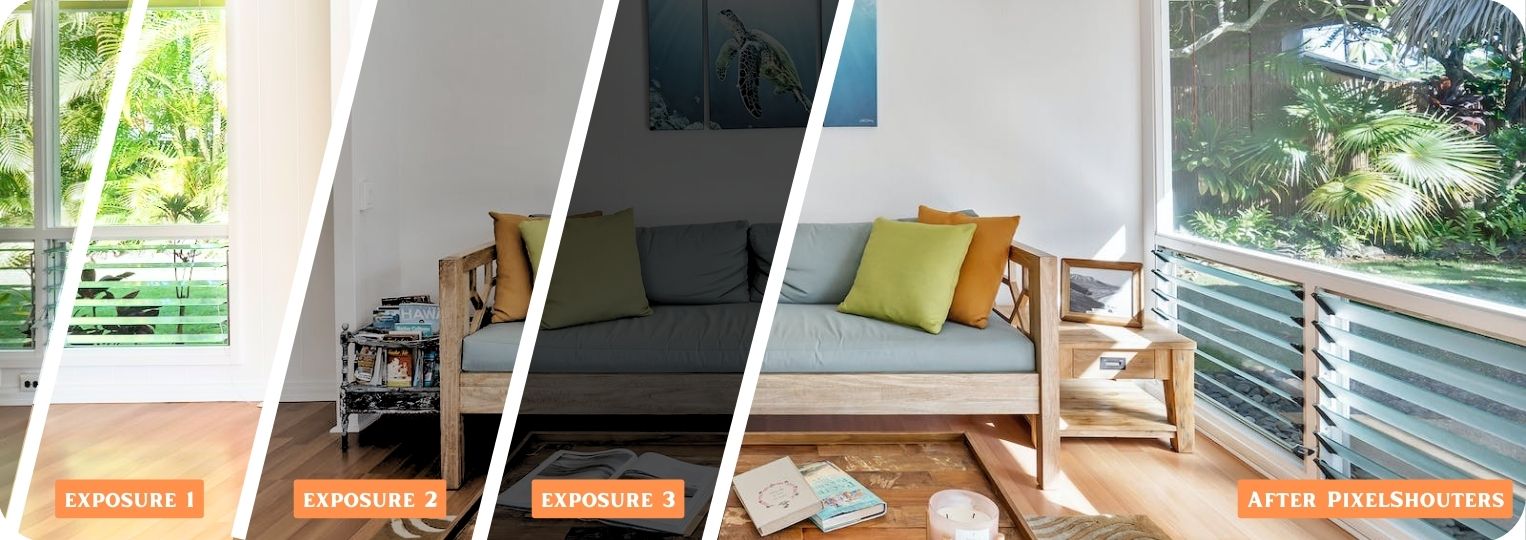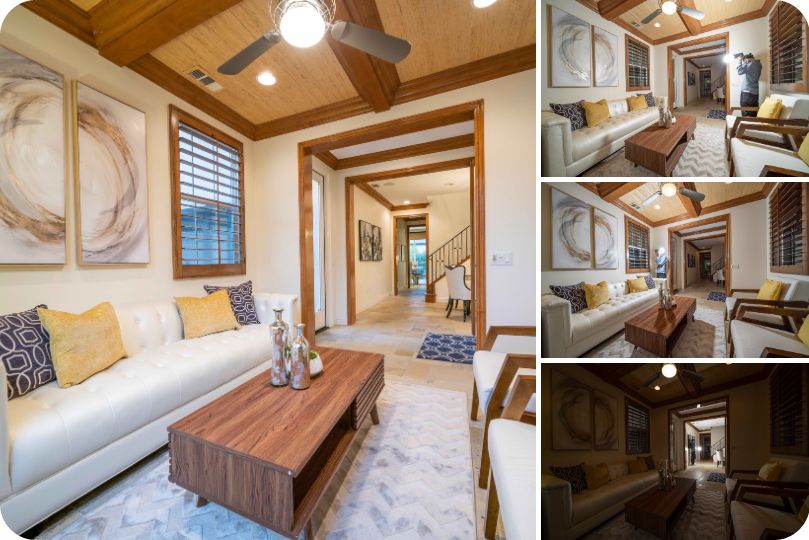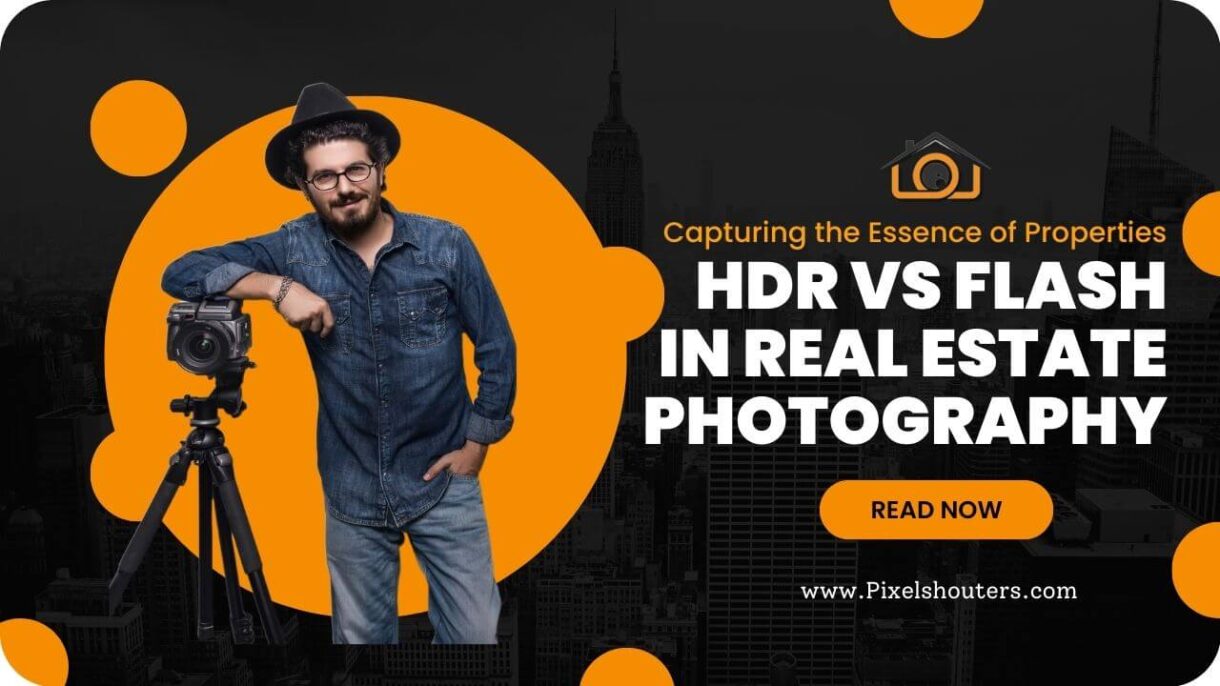HDR Vs Flash in Real Estate Photography: Capturing the Essence of Properties
Real estate photography plays a pivotal role in showcasing properties as it should be and attracting capability consumers. When it involves capturing the essence of a properties, two famous strategies stand out: High Dynamic Range (HDR) photography and flash images. In this article, we will delve into the world of real estate photography and explore the benefits, issues, and variations among HDR vs flash strategies. By knowledge the precise characteristics of HDR vs flash photography, photographers could make informed decisions to create captivating and visually appealing real estate photos.
Quick Jump List
I. HDR Photography Explained
HDR photography is a way that involves taking pictures a couple of exposures of a scene and mixing them collectively to create a very last image with an prolonged dynamic range. By combining underexposed, properly exposed, and overexposed photographs, HDR photography keeps details in both the shadows and highlights. In the context of real estate photography, this technique is particularly useful whilst coping with hard lighting conditions, consisting of rooms with massive windows or areas with contrasting mild sources.
A. Capturing Multiple Exposures
HDR photography starts by means of shooting a bracketed collection of images, generally including 3 or greater exposures: one underexposed to maintain highlights, one well uncovered, and one overexposed to capture shadow details.

B. Retaining Details in Shadows and Highlights
Through submit-processing strategies, which includes merging and tone mapping, HDR photography balances the publicity tiers, revealing details that could be misplaced in a unmarried publicity. This approach guarantees that no essential components of a assets are misplaced because of excessive lighting situations.
II. Advantages of HDR Photography in Real Estate
HDR images gives several benefits on the subject of taking pictures real estate images that as it should be constitute a property’s visual attraction.
A. Overcoming Challenging Lighting Conditions
One of the primary blessings of HDR photography in real estate is its ability to triumph over tough lighting fixtures situations, consisting of rooms with big windows or regions with full-size mild contrasts. By mixing a couple of exposures, HDR images ensures that each the interior and exterior of belonging are well-exposed, resulting in a balanced and appealing photograph.
B. Preserving Details in Bright Windows and Dark Corners
HDR photography excels at maintaining details in both vibrant and darkish areas. It guarantees that the view out of doors a window stays seen without being overly blown out, whilst concurrently revealing info within the shadows of a room.
C. Achieving a Balanced and Natural-Looking Image
The goal of real estate photography is to present a assets in its satisfactory mild while retaining a herbal and sensible appearance. HDR photography, whilst carried out skillfully, achieves this balance via producing images which are visually attractive and appropriately represent the property’s atmosphere.

III. Considerations for HDR Photography in Real Estate
While HDR photography gives numerous advantages, there are numerous issues to maintain in thoughts when the use of this approach for real estate photography.
A. Time and Effort for Post-Processing
HDR photography entails publish-processing paintings to merge and tone-map multiple exposures. This manner can be time-consuming, requiring meticulous interest to detail to acquire the desired result. real estate photographers should allocate sufficient time for publish-processing to ensure the exceptional viable outcome.
B. Potential for Unnatural or Exaggerated Results
When the use of HDR techniques, there may be a chance of producing snap shots that seem overly processed, with unnatural colorations and tonal imbalances. Care should be taken to hold a herbal-looking outcome, as ability buyers can be remove through images that appear overly manipulated.
C. Selective HDR Application for Specific Scenes
Not every scene in real estate photography necessitates HDR. Some scenes might also have a more balanced lighting fixtures surroundings or require the innovative use of lights techniques. Photographers must assess each situation and decide whether HDR is the nice technique or if other lights strategies, would yield better effects.
IV. Flash Photography Explained
Flash photography entails the usage of synthetic lighting to light up a scene. In real estate photography, flash may be used along with ambient mild to stability the exposure and enhance the overall visible effect of the picture.
A. Balancing Ambient Light and Flash Illumination
Flash photography in real estate is set reaching a stability between the prevailing ambient light and the additional light supplied through the flash. The intention is to create a nicely-uncovered image that showcases the property’s functions and guarantees right colour duplicate.
B. Techniques for Using On-Camera and Off-Camera Flash
Real estate photographers can make use of both on-digicam and off-camera flash techniques. On-digicam flash is convenient and smooth to use, providing a brief way to add light to a scene. Off-digicam flash, then again, offers greater flexibility and control, allowing photographers to form the lighting fixtures to match the precise wishes of the property.

V. Advantages of Flash Photography in Real Estate
Flash images offers particular advantages with regards to shooting beautiful real estate photography that stand out.
A. Control Over Light Direction and Intensity
Flash photography gives photographers full manage over the path and intensity of mild, permitting them to spotlight specific regions of a property or control the stability between herbal and artificial mild assets. This manage contributes to creating compelling snap shots that draw visitors’ interest to key features.
B. Freezing Motion and Reducing Image Noise
Flash photography helps freeze movement in interior shots, minimizing blur because of longer exposures. Additionally, by way of the use of flash, photographers can often shoot at lower ISO settings, ensuing in photographs with decreased noise and improved photo nice.
C. Enhancing the Overall Visual Impact
Flash provides a touch of vibrancy and size to real estate photographs. By selectively illuminating areas and enhancing textures, flash photography can make a property visually striking, engaging capability shoppers.
VI. Considerations for Flash Photography in Real Estate
While flash photography gives massive benefits, there are vital concerns to hold in thoughts when incorporating flash in real estate photography.
A. Potential for Harsh Shadows and Reflections
Improper flash placement or usage can lead to harsh shadows or undesirable reflections. It is vital to put the flash effectively and appoint mild editing, including diffusers or soar playing cards, to create a tender and natural light impact.
B. Skill and Experience Required for Effective Flash Use
Flash images calls for technical proficiency and an knowledge of a way to stability ambient and artificial light resources. Photographers must be informed about flash strategies, such as electricity settings, mild modifiers, and the usage of more than one flashes, to gain surest results.
C. Proper Positioning and Diffusion of the Flash for Natural Results
To attain natural-looking snap shots, real estate photographers should role the flash strategically to mimic the path and exceptional of natural light sources within a property. Diffusion techniques, such as using softboxes or umbrellas, assist create a gentle or even light unfold and shadows.
VII. Choosing the Right Technique: HDR vs Flash
Determining whether or not to use HDR or flash in real estate photography depends on different factors, consisting of the particular necessities of the scene, to be had device, and the photographer’s inventive imaginative and prescient.
A. Assessing the Specific Requirements of the Scene
Each property and scene within it provides unique lighting fixtures demanding situations. By cautiously comparing the lighting situations and dynamic variety of a scene, photographers can decide whether HDR or flash is better suitable to capture the essence of the property correctly.
B. Considering the Available Equipment and Resources
Photographers must don’t forget the device and sources at their disposal. HDR images often requires a couple of exposures, at the same time as flash images is based on artificial lighting fixtures system. Assessing the equipment and understanding its competencies aids in making an informed decision.
C. Experimenting with Both Techniques
To decide the highest quality method for a selected scenario, photographers must test with each HDR vs flash images. This exploration permits them to understand the strengths and barriers of each method, main to advanced decision-making and steady outcomes.
Conclusion
HDR photography and flash images are effective techniques for taking pictures the essence of residences in real estate photography. HDR permits for overcoming difficult lights situations and maintaining details in shadows and highlights, whilst flash presents manipulate over light direction, freezing motion, and enhancing visible impact. By know-how the blessings, concerns, and variations between HDR vs flash, photographers can pick the most appropriate technique for each situation. Balancing technical know-how with artistic vision, real estate photographers can create fascinating snap shots that appropriately represent the specific features of a assets, enticing capacity consumers and facilitating successful real estate transactions.
